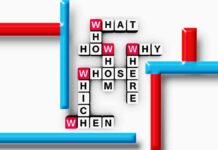A clause is a group of words that contains a subject and a verb. A clause conveys information about what that subject is or is doing, rather than simply being a random grouping of words. It may or may not be a complete sentence, but it will have that distinction of the subject and verb combo.
A sentence can have just one clause or it can have multiple clauses. The only defining characteristic of a clause is that it must contain a related subject and verb. When it comes to expressing a complete thought, a clause falls between a phrase and a sentence. In many cases, a clause can function as its sentence. A phrase, in contrast, can’t.
Clauses are of 7 types
- Independent Clause
- Subordinate Clause
- Adjective Clause
- Adverbial Clause
- Noun Clause
- Relative Clause
- Conditional Clause
Independent Clause
The independent clause is the main clause in the sentence. An independent clause states a full thought and can stand alone as a complete sentence. A simple sentence is just one independent clause without additional phrases added in, while a compound sentence is two or more independent clauses joined by a coordinating conjunction or punctuation.
- The dog ran across the street.
- The woman wept.
Subordinate Clause
A subordinate clause does not have a complete thought, so it is also called a dependent clause and if written on its own is a sentence fragment. It starts with a subordinating conjunction and functions as a part of speech in the sentence. The pattern typically is subordinating conjunction followed by the subject and the verb.
- When the dog ran across the street he was almost hit by a car
- Because the woman wept her family comforted her.
Adjective Clause
An adjective clause starts with a relative pronoun, such as who, whom, whose, which or that, or a relative adverb, such as when, where or why. An adjective clause functions as an adjective. The entire group of words modifies the subject or another noun or pronoun in the sentence.
- The man whom we had never met came over and greeted us warmly.
- The conductor who led the marching band was impressed with his players’ performance.
Adverbial Clause
An adverb clause modifies the predicate or another adverb in the sentence. These also often start with subordinating conjunctions like because, unless, when, although and if. They answer questions like how, when, where, why and to what extent, just like adverbs.
- When Johnathan left the house, he forgot his keys.
- After she graduated from college, Sandra got a job as a nurse.
Noun Clause
If a group of words with a subject and verb functions as a noun, it becomes a noun clause. These can be identified by checking to see if the group of words can be removed and can be replaced with a pronoun or noun.
- You should ask what grandma adds to her cake to make it so sweet.
- Please thank whoever chose to bring chocolate cake to the party.
Relative Clause
A relative clause starts with a relative pronoun, such as that, who or which. It is a type of adjective clause. If the relative clause is necessary for the understanding of the sentence, it is not offset with commas, but if it is not, then comma placement shows this fact.
- She fell in love with Tom, who had a dashing personality.
- The dog that whined loudly was the one they picked at the shelter.
Conditional Clause
A conditional clause uses words like if or unless to show something possible or probable but not necessarily guaranteed. They cannot stand alone without the rest of the sentence, making them dependent.
- If it starts to rain, we will have to go inside.
- Unless you start putting in more effort, you will likely fail math.
Groups of words with both a subject and verb are known as clauses. Clauses can be confusing because they add a subject-verb pattern to the sentence, but they may not include the actual subject and verb of the main sentence. To find clauses and distinguish them from the main sentence, first, find the main action of the sentence. Then, identify the subject that goes with that verb, and any direct objects or prepositional phrases that are part of the main idea. Any additional subject-verb patterns are likely clauses providing extra information to the sentence.
Every sentence that is written includes at least one independent clause. The other clauses in the sentence determine how can they be combined with the independent clause. A sentence that includes two or more independent clauses is known as a compound sentence. In a compound sentence, the clauses are joined by a comma paired with a coordinating conjunction, a semicolon, or a colon. This kind of combination is known as coordination.
- I love drinking soda, but I know it’s bad for my teeth.
- Maria loved hosting dinner parties; her friends enjoyed her cooking.
- We danced until the band finished playing: they played until midnight.
When all the clauses are independent, they can be combined using a coordinating conjunction. The coordinating conjunctions are:
- for
- and
- nor
- but
- or
- yet
- so
To combine a dependent clause with an independent clause, subordinating conjunction is needed. There are a lot more subordinating conjunctions than there are coordinating conjunctions, and they can be divided into categories according to their function.
A sentence that includes an independent clause and one or more dependent clauses is known as a complex sentence, and a sentence that includes two or more independent clauses and at least one dependent clause is known as a compound-complex sentence. In either of these kinds of sentences, the subordinating conjunction signifies the beginning of the dependent clause.
- The fun can begin now that the clown is here.
- While we slept, the plane reached its destination.
- Before you leave, remember to take a goodie bag!
- The pool is open daily until the temperature drops.
Subordinating conjunctions aren’t the only way to add a dependent clause to a sentence. Dependent clauses can also start with relative pronouns or relative adverbs. Relative pronouns include that, whose, whom, who, and which.
- The guy who shouted all night made it impossible to fall asleep.
- Pac’s, that restaurant with the arcade, is the best in town.
Relative adverbs include where, when, how, and why.
- The traffic jam is the reason why we were late.
- I have no idea when my hose stopped working.
Remember, a clause can serve as a noun, adjective, adverb or main idea of the sentence.



























